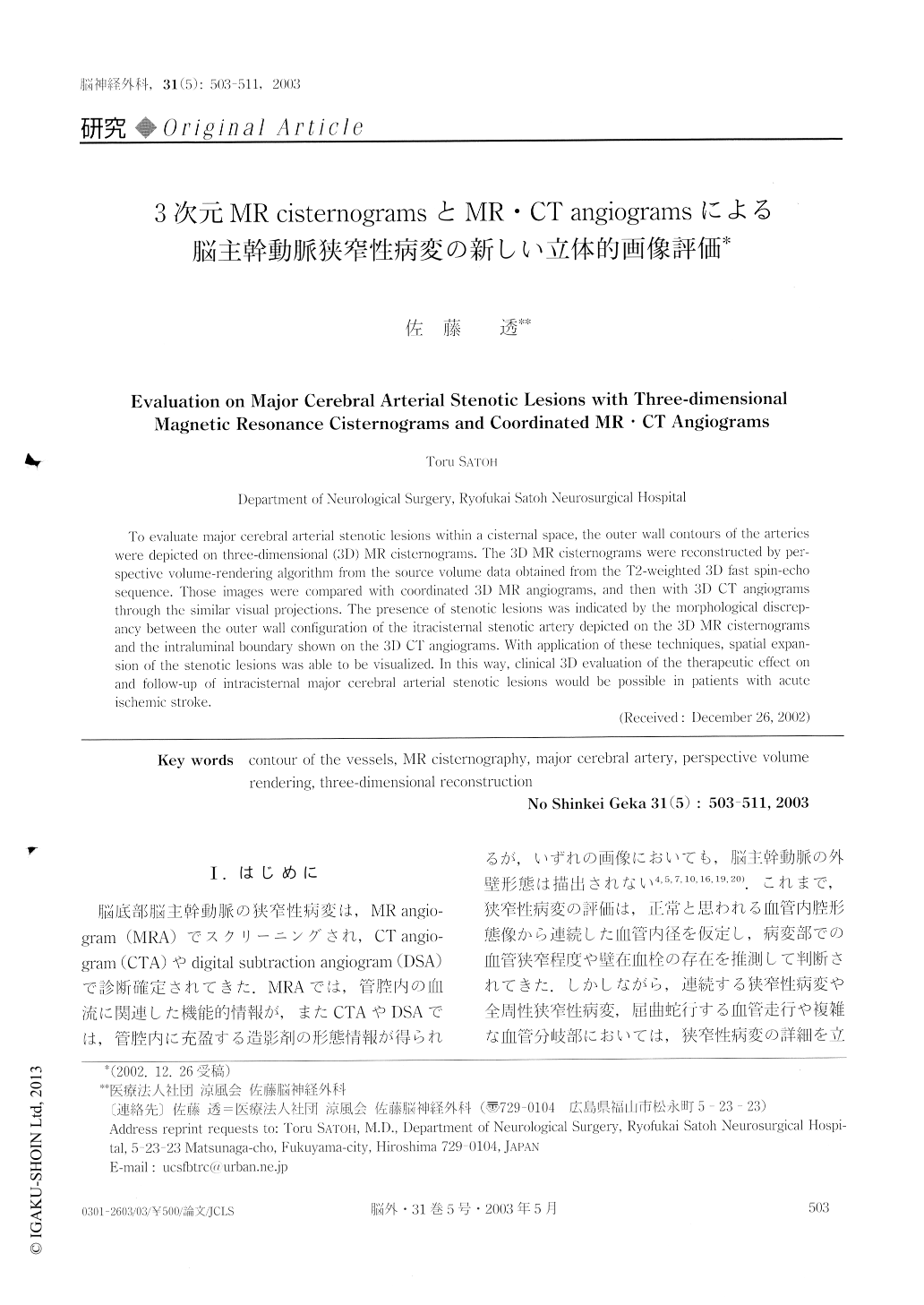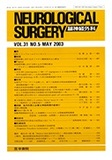Japanese
English
- 有料閲覧
- Abstract 文献概要
- 1ページ目 Look Inside
Ⅰ.はじめに
脳底部脳主幹動脈の狭窄性病変は,MR angio-gram(MRA)でスクリーニングされ,CT angio-gram(CTA)やdigital subtraction angiogram(DSA)で診断確定されてきた.MRAでは,管腔内の血流に関連した機能的情報が,またCTAやDSAでは,管腔内に充盈する造影剤の形態情報が得られるが,いずれの画像においても,脳主幹動脈の外壁形態は描出されない4,5,7,10,16,19,20).これまで,狭窄性病変の評価は,正常と思われる血管内腔形態像から連続した血管内径を仮定し,病変部での血管狭窄程度や壁在血栓の存在を推測して判断されてきた.しかしながら,連続する狭窄性病変や全周性狭窄性病変,屈曲蛇行する血管走行や複雑な血管分岐部においては,狭窄性病変の詳細を立体的に把握することは困難といわざるを得ない.
近年のMR imaging(MRI)装置の性能向上や撮像技術の進歩に伴い,T2—weighted three-dimen-sional(3D)fast spin-echo(FSE)sequenceを使用したMR脳槽画像(MR cisternogram,MRC)では,信号雑音比の良好な脳微細形態断層情報が比較的短時間で得られる.
To evaluate major cerebral arterial stenotic lesions within a cisternal space, the outer wall contours of the arteries were depicted on three-dimensional (3D) MR cisternograms. The 3D MR cisternograms were reconstructed by per-spective volume-rendering algorithm from the source volume data obtained from the T2-weighted 3D fast spin-echo sequence. Those images were compared with coordinated 3D MR angiograms, and then with 3D CT angiograms through the similar visual projections.

Copyright © 2003, Igaku-Shoin Ltd. All rights reserved.


